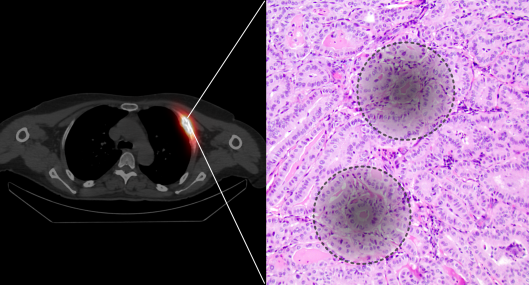Speaker
Description
A long-serving but somewhat obscure part of radiation therapy - targeted therapy of cancer using radionuclides have advanced considerably during the last two decades. By internal irradiation through physiological accumulation of radioactivity, tumours can be treated from the inside in any and all parts of the body. With advances in design and manufacture of targeting agents labelled with therapeutic radionuclides, several new radionuclide-based drugs have been approved for clinical use and research is expanding. The treatments are associated with less side effects than most other cancer drugs, due to the highly specific accumulation in the targeted tumour cells.
This lecture will give an overview of radionuclide therapy in modern nuclear medicine. Patient cases will be presented, along with some of the physical aspects of treating patients with radionuclides. Special emphasis will be given to recent advances in tailoring individual treatments and new agents that may become part of clinical care in the near future.
 A thyroid cancer metastasis in a rib (SPECT/CT image, left) can be treated effectively with radionuclide therapy (131I). The tumour tissue (light microscopy, right) accumulates iodine and is irradiatied from the inside by beta particles. The average beta particles (range shown as dashed circles) deposits its lethal energy across tens of tumour cells, inducing cell death.
A thyroid cancer metastasis in a rib (SPECT/CT image, left) can be treated effectively with radionuclide therapy (131I). The tumour tissue (light microscopy, right) accumulates iodine and is irradiatied from the inside by beta particles. The average beta particles (range shown as dashed circles) deposits its lethal energy across tens of tumour cells, inducing cell death.
